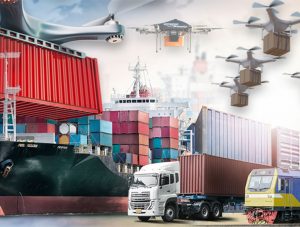 Delivery drones are revolutionizing shipping by offering speed, cost-effectiveness, and the ability to reach remote locations, contributing to environmental sustainability and reducing traffic. As a key player in modern logistics, delivery drones are equipped with advanced technology and operate in the critical “last mile” of package delivery. While their benefits include reduced operating expenses, increased efficiency, and immediate order fulfillment, challenges such as regulatory constraints, safety concerns, and technological limitations are actively being addressed.
Delivery drones are revolutionizing shipping by offering speed, cost-effectiveness, and the ability to reach remote locations, contributing to environmental sustainability and reducing traffic. As a key player in modern logistics, delivery drones are equipped with advanced technology and operate in the critical “last mile” of package delivery. While their benefits include reduced operating expenses, increased efficiency, and immediate order fulfillment, challenges such as regulatory constraints, safety concerns, and technological limitations are actively being addressed.
Working Concept Of Delivery Drones
Delivery drones leverage GPS, sensors, and cameras to navigate and reach their destination. Equipped with 4-8 propellers and rechargeable batteries, they transport lightweight containers. The operation can be autonomous, guided by AI technology, or remotely monitored by distribution centers. Challenges include regulatory complexities, safety concerns, and technological advancements required for efficient and widespread deployment.
Types Of Delivery Drones
- Fixed-Wing Drones:
Resemble mini airplanes, suitable for long trips in remote areas. Require runways for takeoff and landing. Ideal for fast deliveries but are often pricier.
- Multirotor Drones:
Have multiple propellers, providing agility for precise deliveries. Limited flight time and vulnerability to strong winds are drawbacks.
- Hybrid Drones:
Combine features of fixed-wing and multirotor drones, offering versatility and efficiency for medium-range deliveries.
- Single-Rotor Drones:
Similar to powerful helicopters, capable of carrying heavy payloads over long distances. Complex, expensive, and noisy.
Uses Of Delivery Drones
- E-commerce Deliveries:
Direct delivery from online retailers to customers, reducing delivery times and costs.
- Medical Supplies:
Transport urgently needed medical supplies to remote or disaster-stricken areas.
- Food Delivery:
Rapid delivery of food orders, especially in congested urban areas.
- Search and Rescue:
Deliver essential supplies during emergencies or natural disasters.
- Agriculture:
Spraying crops, monitoring fields, or transporting agricultural products.
- Surveying and Mapping:
Aerial mapping and surveying of terrain, construction sites, or archaeological sites.
- Infrastructure Inspection:
Visual inspections of critical infrastructure such as bridges, power lines, and pipelines.
- Environmental Monitoring:
Collecting data on environmental conditions, air and water quality, and wildlife tracking.
- Parcel Delivery:
Transporting small parcels and documents efficiently within cities.
- Remote Locations:
Reaching remote areas, such as offshore oil rigs, with necessary supplies.
Advantages Of Delivery Drones
- Reduced Wait Times:
Swift operation minimizes delays and avoids traffic congestion.
- Cost Savings:
Cost-effective with no sick days or fuel requirements, and autonomous operation reduces labor expenses.
- Environmentally Friendly:
Reduces fuel consumption, benefiting both businesses and the environment.
- Safer, Autonomous Shipping:
Precise GPS and navigation systems enable independent deliveries, enhancing safety and convenience.
- Easier Shipping to Remote Areas:
Efficiently delivers essentials to remote regions, improving access to crucial resources.
Disadvantages Of Delivery Drones
- Regulatory Constraints:
Complex regulations governing drone operations, requiring permits and safety protocol demonstrations.
- Safety Concerns:
Risks of collisions with obstacles or other aircraft, necessitating sensor-equipped drones and emergency shutdown systems.
- Technological Limitations:
 Battery constraints leading to limited flight time and range, requiring advanced collision avoidance systems.
Battery constraints leading to limited flight time and range, requiring advanced collision avoidance systems.
While delivery drones are reshaping the logistics landscape with their efficiency and versatility, challenges such as regulatory hurdles, safety concerns, and technological limitations are actively being addressed.
The ongoing development of drone technology holds promise for a future where rapid, eco-friendly, and precise deliveries are the norm, transforming the way we perceive and manage logistics in the modern world.























































